We have tried for several days the new Sonos Soundbar Arc, a speaker that defining versatile is an understatement: designed to be placed under your TV, it is able not only to improve listening to films and television series and to enhance the voices. of the dialogues and the most exotic settings but also of making you listen to good music at the level of quality we are used to with the products of the Californian company.
But how does it work? How does the myriad of speakers on board behave? Connectivity with Alexa, Google Assistant, and Airplay 2 systems? The combination with the latest TV with eARC or older or with an Apple TV and a projection system how are they? What about inclusion in a Previous Sonos ecosystem? Do I need a SUB and do I need surround speakers as well? In this review, we try to answer all these questions.  The black model in full length
The black model in full length
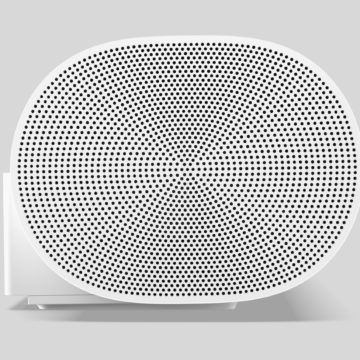
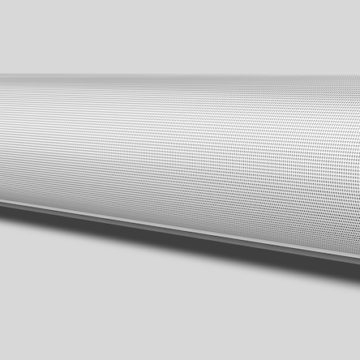
Let’s state this openly before starting the review: the writer is in love with Sonos and especially last year’s Sonos who created Amp, Move, and this Arc that represent that mix of product quality and “absolute” design that transforms a technological object into a perfect shape that has a value in itself. 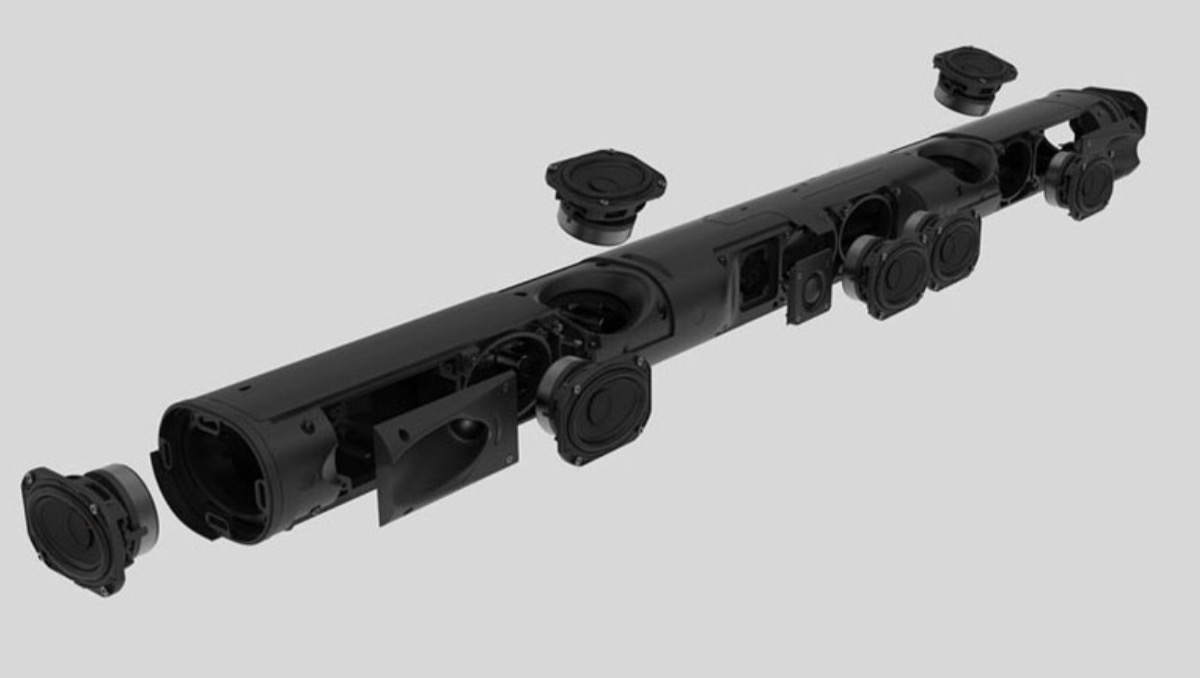
The shape and design
Let’s immediately analyze ARC for what it looks like: a long flattened cylinder that penetrates a regular parallelepiped in one of its quarters. An elusive front that reduces its apparent height and allows it to be placed in front of a TV with a pedestal that is not too high but at the same time reminds us that the sound emission is not reserved only for the front side but also on the sides with the end truncated and to your ceiling (and its reflection towards you) to give you a better Dolby Atmos experience. An almost pure form that is coupled leaning, suspended, detached to a flat screen, which is combined with the perfect satin metallic finish (black or white) that we have come to know with Move and which leads us to a product that remains unchanged in its time (no fabrics) and which conveys an idea of solidity and is ready to make it perceive even when it is in operation, without vibrations or distortions.
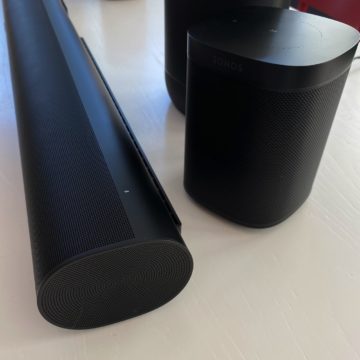
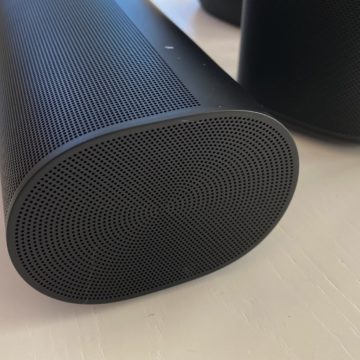
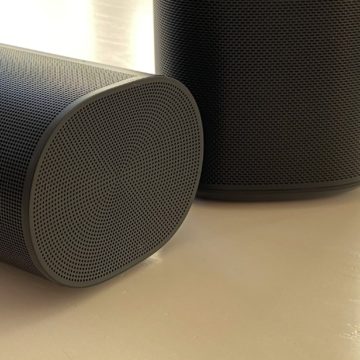


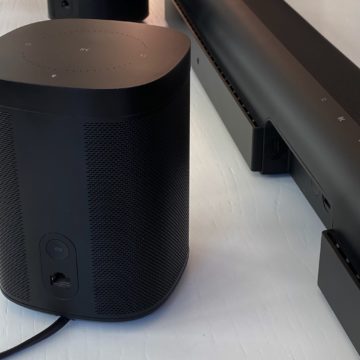
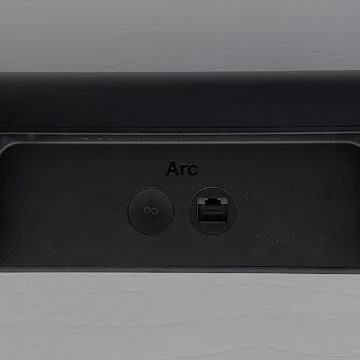
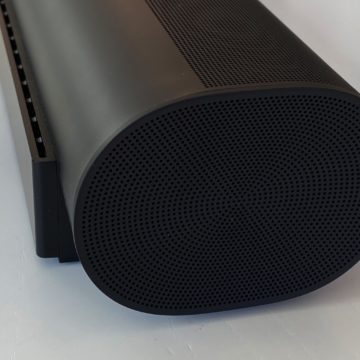

This shape that allows the different orientation of the internal speakers without betraying or limiting the direction of emission seems to be the literal interpretation of its name: soundbar, a real soundbar that is somehow easy to grasp or caress but at the same stable and easy to place or hang. After this elaboration on the essence of Sonos design, let’s move on to discover how it sounds and what technologies it uses to become the worthy replacement not so much for the small Sonos Beam that remains in the catalog and from which it inherits the smart part as much as the old Playbar that competed for size and presence while belonging to another era in the history of wireless audio.
The generous dimensions of Arc are well suited to both the aspect ratio of a 55 or 65 inch, the best-selling TV sizes in recent months and slightly smaller (think of the 48 “LG OLED) but it will not disfigure at all even at the base of a projection screen or a larger TV and later we will explain why … Audio Equipment Here is what we find onboard: – Seven Class-D digital amplifiers – Eight elliptical woofers for the reproduction of the midrange and vocal frequencies in addition to the low range – Three silk-dome inclined tweeters for high frequencies and crystal clear dialogue – Four far-field matrix microphones for advanced waveform and multi-channel echo cancellation for fast response to voice commands. – Trueplay software that dynamically adjusts the response to specific room characteristics. An iOS device is required for data acquisition. – Customizable equalization with settings within the app with bass, treble, and loudness adjustment. – Speech enhancement – emphasizes human voice frequencies to make dialogue more intelligible – Night Sound Mode to reduce louder sound effects intensity
Design Details Dimensions – H x W x D: 87 x 1141.7 x 115.7 mm – Matte Black or Matte White finish – Status LED that indicates the status of the speaker and microphones and adjusts the brightness based on ambient light to be visible without distracting. – Capacitive controls for Pause, Play, volume adjustment, and microphone deactivation, scrolling left and right to manage the tracks. – Weight of 6.25 Kg
Unboxing Below the unboxing gallery with the contents extracted from the long cardboard box: the soundbar with a cloth case, the excellent HDMI connection cable, the power socket, and the HDMI-optical adapter to connect old TVs that do not have HDMI. Finally, a dimensional and aesthetic comparison with Sonos One and Sonos Move and some details of the interface with the keys at the top (for volume control and audio tracks) and on the far right the touch that activates or deactivates the microphone for operation as a smart speaker for Alexa and Google Assistant. 
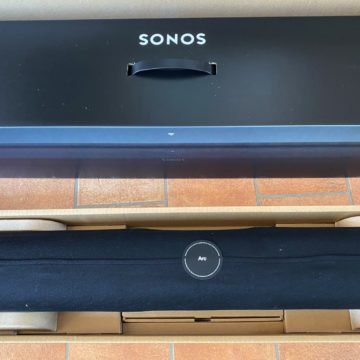
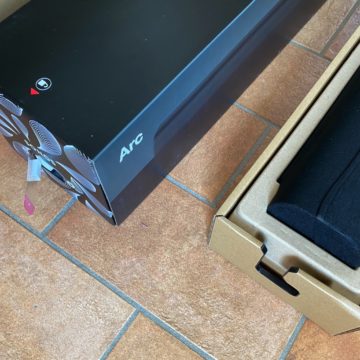
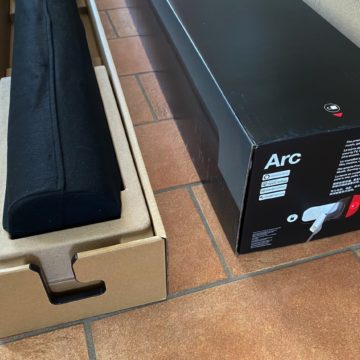

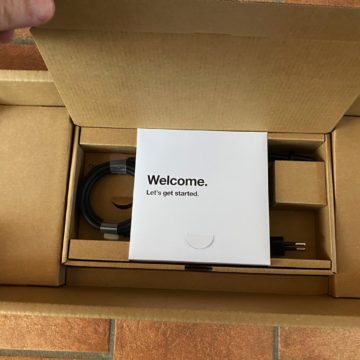
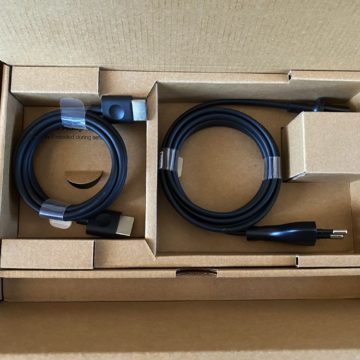
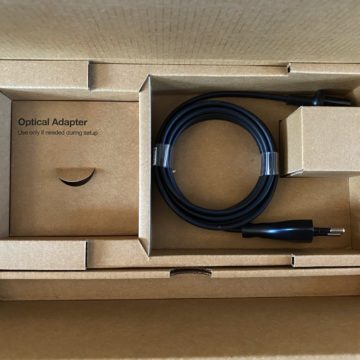
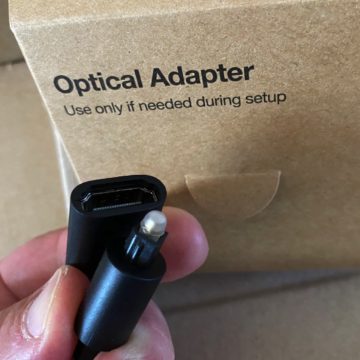

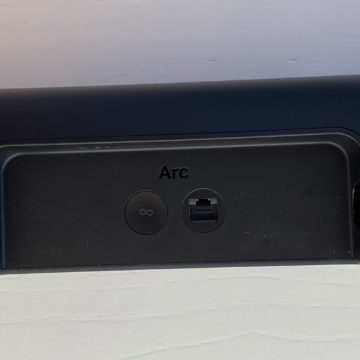

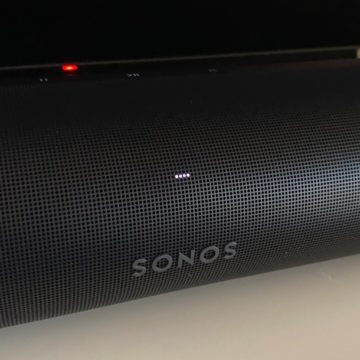

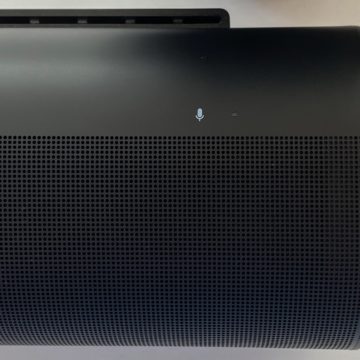
We have described in a few words the contents of the box with which the soundbar arrives and the “external” functional details: its installation does not require much more than unboxing: it involves connecting the power cable and the connection to the TV, the only it is difficult to find the HDMI socket of the “ARC” or “eARC” type on the back of the TV (which is often hung and does not expose all the sockets on the side) the names partially coincide with those of the soundbar but do not get confused: yes It is a connection standard that allows you to get the maximum versatility possible from HDMI and the most recent variant, eARC allows you to have the highest audio quality (uncompressed) and perfect lip sync with the contents that pass on your TV.
Below we see the differences between an optical connection, an HDMI with ARC, and an HDMI with eARC. 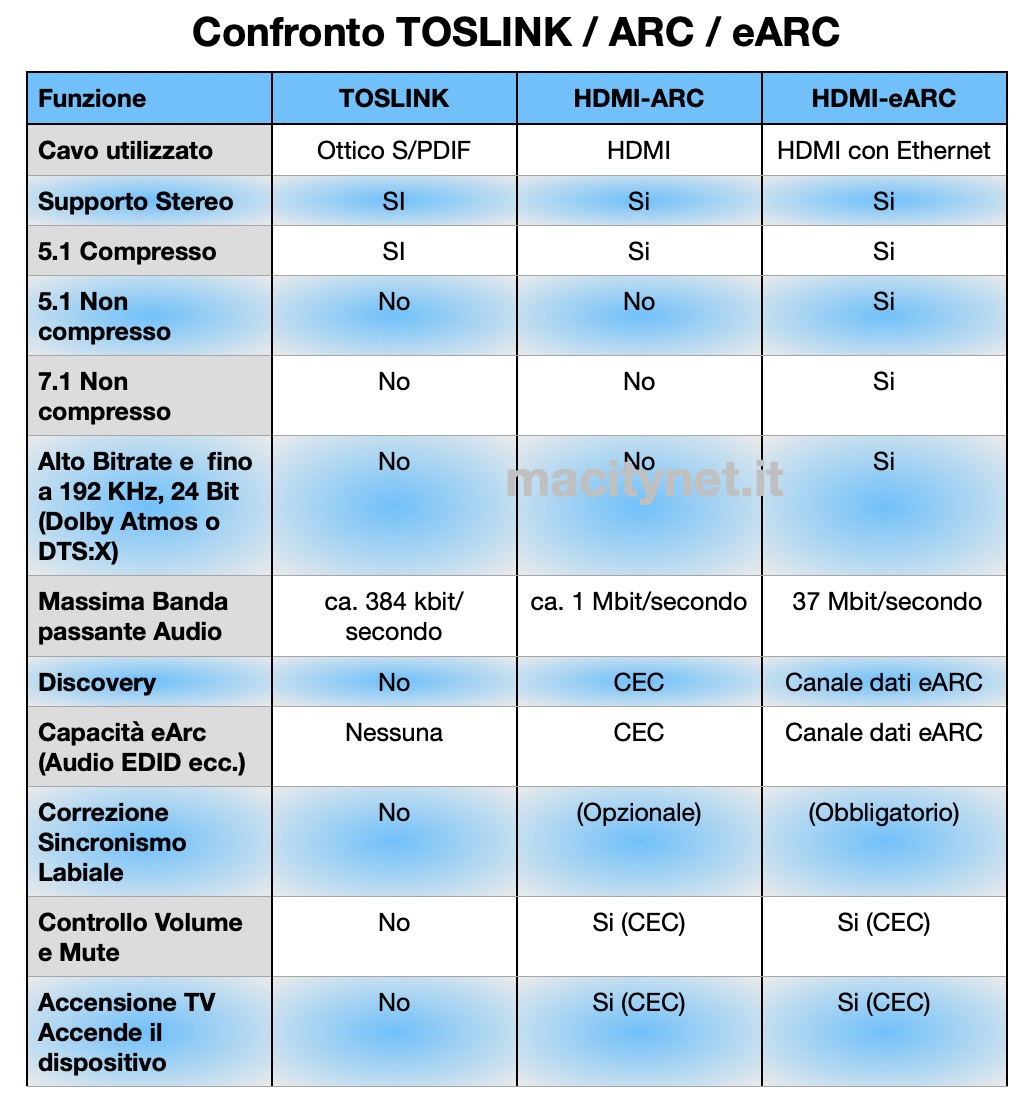
The software configuration
As you can see by browsing our very complete software installation gallery, the operation consists in connecting the soundbar to your wi-fi network (or if you prefer to your router with a direct Ethernet cable) and putting it in communication with your iPhone, iPad, Mac and PC and Android to manage the music and content coming from the TV.
The step-by-step procedure that we report below allows you to check both the exact connection to the right HDMI socket of your TV and to calibrate the sound given by the interaction of the soundbar with both the furniture or the supporting wall but also of all the walls. surrounding. This is important since the speakers onboard are facing both the ceiling and the sidewalls and knowing their position together with that of the listener is essential to calculate the reflection times of the sound emissions: a “calibrated” reproduction will offer you the best of environmental reconstruction with surround systems and even more with Dolby Atmos object-oriented audio.
Below is the part concerning the Truplay calibration which requires the elimination of the phone cases that could interfere with the sound detection: first you indicate the listening position and then proceeds to detect the room with a sort of “dance” with the telephone that is moved up and down along the perimeter of the room to be analyzed. The process takes a few minutes in which you have to flood the room with the impulsive and cyclic signal emitted by the soundbar. In the end, a green detection screen will appear but Sonos continues to analyze the room and its response to improve its performance also according to the level at which you are listening to music and TV.
Configuration as an Alexa smart speaker or Google Assistant
Once the soundbar is acoustically configured we can switch, if we want, to give it a direct listening system: it will be able to obey the commands of Alexa or Google Assistant for the playback of music, podcasts, and everything that we cannot manage from the TV, also we could adjust the volume and resume playback of tracks also from the touch keys on the upper central surface or turn off the microphone by touching the appropriate key.
As with Sonos speakers equipped with the same technology, the system has good responsiveness, the only problem is that the very high sound levels that can be reached force us to scream sometimes to stop the playback of the music started from the smart speaker section …
Airplay configuration
Let’s not forget that Sonos Arch is also an Airplay 2 compatible speaker and if we have an iPhone, iPad, Mac, or Windows with iTunes we will be able to make it sound like a multi-room system that can be controlled directly and also with Homekit. We remind you that many Sonos products made directly or in collaboration (with IKEA for example) are Airplay 2 compatible and you can find them listed below. In addition to this they can be grouped with old incompatible products to “route” the audio to them through the Sonos system.
If we use Apple TV as a Wireless Audio source we can also skip the direct HDMI connection from the TV and use it with external projectors by conveying the audio on the Wi-Fi directly to the Soundbar.
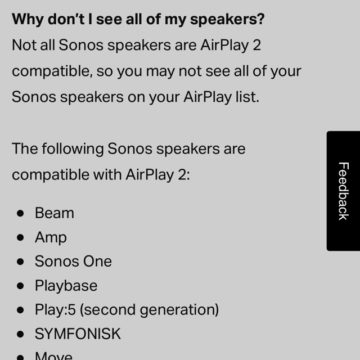
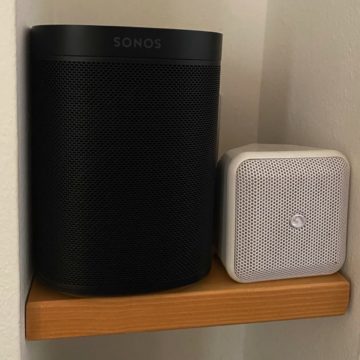
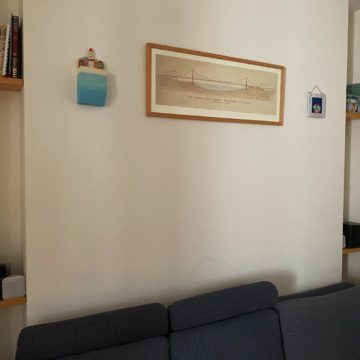
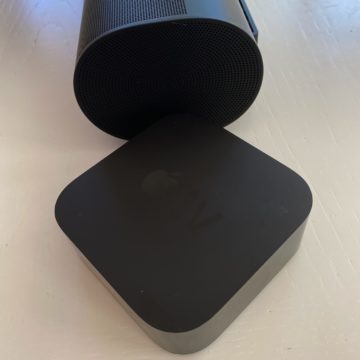
Arc and TV controls
After talking about configurations and connection options, we come to the control possibilities of the Sonos Arc. We said that with the soundbar two different worlds are married: that of music and that of TV: the marriage seems successful from the acoustic point of view and also from the comfort of control: you can switch from listening to our favorite streaming services ( over 50 different sources and in addition the new Sonos Radio which makes its debut with specific services for Italy on June 3) to the management of the TV with Dolby Atmos contents.
The management software actually comes to an S2 version (which we are testing in beta and which you can see in detail in the screenshots below) which is able to manage all the new high-resolution content (Tidal for example is offering tracks remixed in Dolby Atmos) and all new devices with an improved processor such as Sonos Five and the new Sub in addition to this Arc.
Among the peculiarities of Arc management, we have a “ Sound at Night ” mode that allows you to make the effects more effective even at low volume and without waking up wives/husbands and children or neighbors, there is the possibility to balance the listening to the TV or its audio and video transmissions (conveyed through HDMI) and those of the music played by Alexa, Google or through Airplay.
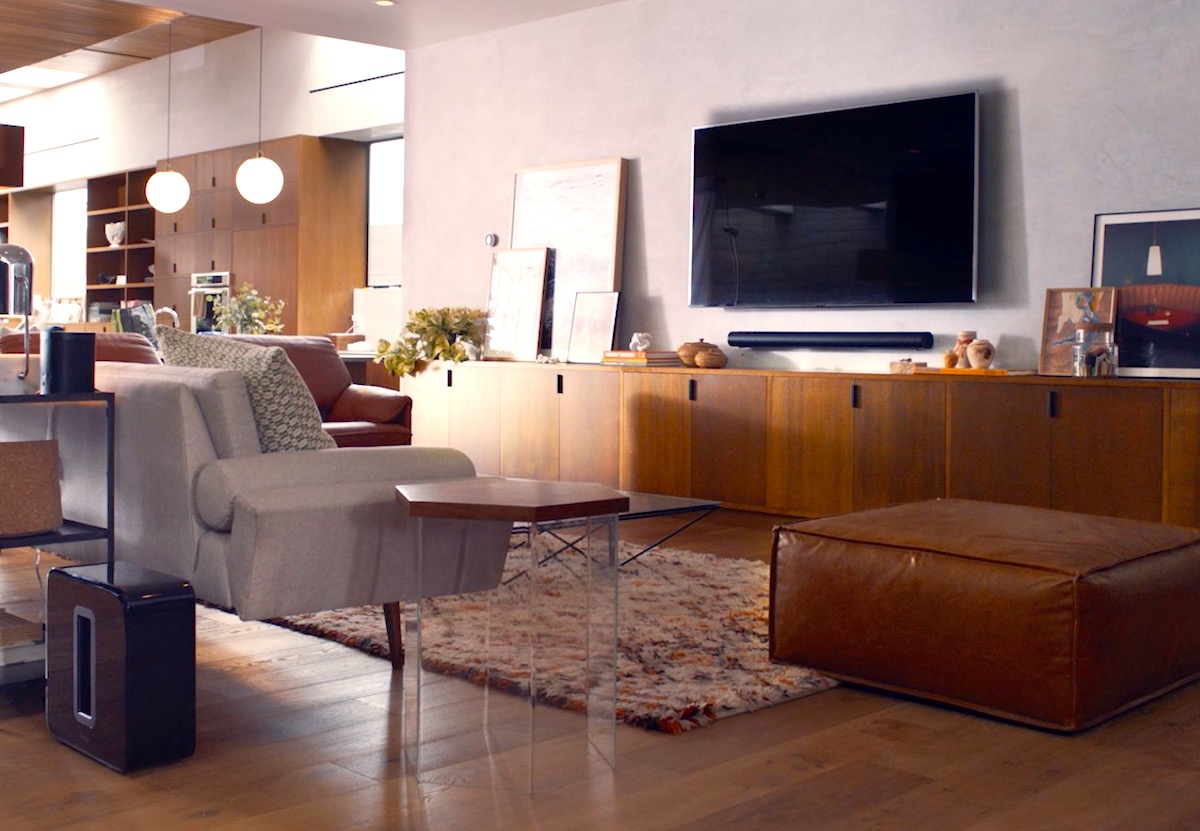
How does Sonos Arc sound on its own?
Music As mentioned at the beginning, the Soundbar is placed on the market as a premium product able to work alone and to be completed, if the user wants, with a very powerful SUB and surround speakers. In reality, the calibrated configuration and the presence of the speakers pointing to the ceiling and exploiting the reflections should help to recreate a “surrounding” effect even with only one physical element in the room.
Does the result convince us? From the point of view of sound quality we are absolutely at levels of excellence: listening to the music we tried alternating with other Sonos devices confirms an absolute tonal coherence: the Californian designers have also brought a sound to this new form factor that we like it, it relaxes us and makes us appreciate both easy, jazz, and classical music without pedantic lows or too sizzling highs. Among other things, listening to the highest levels does not introduce any distortion and you can also afford to use it for parties at home without drilling your friends’ ears.
We also listened to several remastered and remixed classic songs (a Jethro Tull greatest with some original songs that were in monophonic) and that thanks to the wide and balanced distribution of the speakers reconstruct a wider scene than usual and still credible. The presence of a good mid-range reproduction section helps the songs with the voice in the foreground and yet without overdoing it makes the whole very warm and “present”. If you want to test it, you can use Stevie Wonder’s “Dont’you Worry About The Thing” in Jacob Collier’s “a cappella” interpretation, a real riot of voices that stimulate your brain with the vocals running around in all corners. of the room.
Films and TV series We have already said that the speech is enhanced both by the intelligence of the soundbar that makes the most of the whole range of speakers and their spatial displacement but what happens with the effects of the films, with the action scenes with the sounds that dynamically move from the front to the back of the scene and vice versa?
As mentioned, we performed our main tests on the latest-generation LG TV with HDMI 2.1, with a Dolby Atmos on board a bit castrated by thin speakers and propagation by reflection: the arrival of the soundbar has enormously widened the sound field. and above all, he balanced it as we expected by reconstructing the greater distance of the right wall (3 meters) compared to the left one (half a meter) and the diversity of materials (curtain + window against plaster) and their acoustic properties but the correction more “spatial” than we expected was that of the speakers pointing to the ceiling.
The benefit is there and in some films, it is felt more than in others and above all, it is evident in the tests made on purpose and in some action films (try Netflix with the trailer for “Tyler Rake” for a concentrate of adrenaline or watch yourself the avalanche scene in the “SnowPiercer” series) while in films where the sound offers less dramatic contour to the scenes it is difficult to identify the sound behind.
We think that the intervention of the soundbar is a huge step forward in the spatial reconstruction of the scene and the presence of the audio compared to even a good TV but to have a truly “tangible” surround effect, the speakers on the back are required.
Moreover, the presence of the soundbar is also appreciated in 5.1 soundtracks such as that of “Ralph Breaks the Internet” which is a riot of electronic effects and acoustic references to the past of the most hardened nerds and in which the presence of Arc gives a pleasant listening that TV alone will never deliver.
The other question we asked at the beginning is do we really need the subwoofer? The answer “q most certainly not “: the soundbar has a truly frightening bass emission, so much so that it has taken several reproaches from family members for the volume and the” rumble “on walls and floors caused by particularly” agitated “movie soundtracks. Let’s say that the placement of the soundbar also offers a good help: if you use a piece of furniture with a good resonance chamber such as that of the living room in the main configuration (photo at the beginning of the review) the piece of furniture itself will offer you an excellent side for reproduction low frequencies and in any case, you will not have strange vibrations in the soundbar even at higher volumes but … be careful what you keep in the drawers because it will move in sync with the bass of your film!
In any case, there is a “night” mode that allows you to enjoy an effective distribution of the movie soundtrack without disturbing relatives and neighbors.
In the other two configurations we tested with the soundbar resting on a simple marble shelf (with portal support) and one suspended above a fireplace, the bass was heard a little less but the overall sound always remained balanced and present. In this case, we would like to advise you to buy Arc alone and only after having examined the requests of family or friends (and yourself) with respect to the need for a low-key strategy-involving in action films, to think about the ‘purchase of the Sub which is obligatorily the one supplied by Sonos itself.
How does it sound with two additional surround channels?
Given the premises, before thinking about buying a Sub, we would think, as a first step in expanding the system, to buy two Sonos One SL satellites (or other stereo combinations). The Sonos One SL eliminate (even from the price of about 50 euros) the smart part from the Sonos One and at the same time offer a signal that is not the slightly puny one, all on the medium frequencies, of many accessory speakers but a real full-bodied surround with bass that helps increase the presence of the soundtrack even behind you. And Sonos with new software, calibration, and experience know how to enhance the new balance.
In addition to the Sonos Arc alone we tried a more “traditional” setup with two Sonos One speakers as surround channels. Attention, they do not need to be “smart” speakers, just any Sonos stereo pair of speakers with identical physical characteristics.
Below you can see the whole configuration procedure that allows us to identify the additional speakers (which we have reset from a stereo configuration for listening to music) and to assign them to the right surround channel. We have seen in the control screens above how it is possible to manage the balance between the main channels (They are Arc but also AMP with traditional speakers) and the surrounding ones to have a balanced effect on all four channels or have the music on the main ones only.
A request to Sonos
We also talked about it during an interview with Sonos product managers: the company’s products are normally designed for a fixed installation and the room data acquisition operation with TruePlay should be done one-off but at the same time it would be interesting, given the versatility and the ease of moving the various products within the same house or outside or in another environment, the possibility of recording different TruePlay configurations for different locations and combinations of speakers so that we can carry a pair of Sonos One or Sonos Five in the garden for a dinner or party and then relocate them in the living room to be part of the surround system. It is clear that for this specific function you could use two Sonos Moves (which have “automatic” Truplay) but cost € 399 each, and Sonos still has a wide range of speakers in the catalog and with an evolution of the new S2 software, you could create a memory of configurations to be recalled every time we move our Sonos speakers other than Move to a new position.
Conclusions
We have been waiting for a move from Sonos in the field of high-end soundbars for a long time and Arc is certainly an excellent answer, consistent from all points of view with the recent production of the company. Linear aesthetics, timbre correctness, the ability of the software to analyze the environment to adapt the reproduction, the user in the foreground to make the operation easy and the reproduction quality able to exploit high-quality signals show the will to grow in research and in performance.
Dolby Atmos and the particular configuration of the speakers inside Arc offer great help to those who do not have the possibility to install a large number of speakers in the living room and the physical configuration of the speakers installed obliquely helps to make all films much more engaging (and they begin to be many) that use coding and, thanks to Arc’s “intelligence”, also those with 5.1 soundtracks.
If the presence in the high and mid-range could not have problems and yet they are enhanced by the powerful configuration there could be some doubts about the low range but here Arc turns out to be a nice surprise managing, without a subwoofer, to involve the spectators widely in the action. Lovers of catastrophic films might perhaps want a leap low in the frequencies of earthquakes and skyscraper shaking but in all the films and series we have seen in recent weeks the lower frequencies reached well beyond the threshold of tolerance of family and neighbors.
After the test with the two additional surround channels we are convinced that their addition, if you have room to install two speakers behind or on the sides of the sofa, is a completely rewarding move, especially to increase the “spatial” involvement in action soundtracks. . After all, you just need a simple power supply if you use Sonos One SL or the small IKEA and not even that if you use the versatile rechargeable Sonos Move. The price is not very low but it is commensurate with the quality and versatility of the product which does not deny the appellation of “premium” for quality of components, finish, and sonic versatility and placement in any Audio Video chain.
In addition to this you can “pay in installments” over time the construction of your system by deciding when to add the surrounding channels and with the certainty that whatever the choice is, the newcomers will be perfectly integrated into the Sonos system and into your room.
Pro
- The well-balanced sound both in the music reproduction and in the columns sound
- Management application S2 is very convenient and multi-platform without continuity of control
- Optimized management with eARC for the latest TVs
- Bass well present and never “fatiguing” without the Sub
- Availability of Alexa, Google, and Airplay 2 for all home automation integrations
- The great amplitude of sound front with physical dimensions that do not exceed the width of a 55 ″ screen
Against
- Dolby Atmos, however engaging, cannot make up for the presence of two surround speakers
- Room analysis with Truplay is only available with iPhone.
Retail price
Arc replaces Playbar and Playbase in the Sonos range and will be available globally on June 10 for 899 Euros on sonos.com, Amazon, and through authorized dealers. Sonos One SL is on sale on Amazon and in the Sonos store for 199 Euros.





